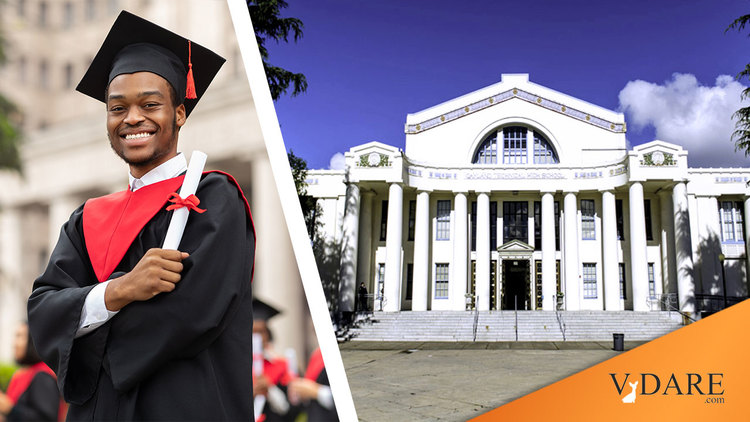
Self-Promoter’s Master Class: Call Attention To How Exceptional You Are By Shaming White People For How Exceptional You Are
By Steve Sailer
06/30/2021
From The New York Times opinion page, a good example of the Young BIPoC Self-Promoter genre. Call attention to how exceptional you are by shaming white people for how exceptional you are:
Black Valedictorians and the Toxic Trope of Black Exceptionalism
June 29, 2021, 5:00 a.m. ETBy Samuel Getachew
Mr. Getachew graduated in 2020 from Oakland Technical High School in California. He is the 2019 Oakland youth poet laureate.
I was in the sixth grade in 2014 when a high school senior named Akintunde Ahmad appeared on “The Ellen Show” and announced that he had committed to attend Yale University. After graduating from Oakland Technical High with a 5.0 grade-point average and receiving acceptances to a number of top universities, he had become a bit of a hometown hero, featured in articles that upheld him as an “inner city” success story.
Five years later, Mr. Ahmad offered his perspective on the fanfare that had surrounded him as a teenager: “My story is told as though it is a positive one, inspirational,” he wrote in The Atlantic. “But I see it as a grim one, the tale of a harsh reality that wrecks people. There is nothing positive about classifying me as an exception. When a person is exceptional for doing what I have done, the whole system is cruel to its core.”
I’m also from Oakland. As a Black and ambitious student with few role models, I was fascinated by Mr. Ahmad’s trajectory. Six years after he appeared on “The Ellen Show,” I graduated in May 2020 from the same high school during a pandemic, preparing to attend Yale as well. One year after that, Ahmed Muhammad, a former classmate of mine, was celebrated in a number of newspapers and television shows after being named the first Black male valedictorian in Oakland Technical High School’s long history.
It’s almost as if black males who do well at Oakland Tech high school tend to get celebrated in the media.
Interestingly, all three have names that that suggest their ancestors weren’t slaves in the United States but were instead slave-sellers back home in Africa.
I’d known Mr. Muhammad since he was a freshman, and I was incredibly proud of him. But the familiar fanfare once again failed to acknowledge the challenges that Black students — including Mr. Muhammad and I — continue to face.
In his graduation speech last month, Mr. Muhammad pointedly asked why it took 106 years for Oakland Tech to award this honor to a Black male student:
Maybe because no black males had the highest GPA?
“So why me?” he asked. “I don’t know. But for all of those who didn’t get to maximize their potential, for all those who had the ability but lacked the opportunity, I owe it to them to appreciate this history made by the people who put me in this position. We owe it to them to make sure that, while I may be the first young Black man to be our school’s valedictorian, I won’t be the last.”
We all owe it to those who follow in Mr. Muhammad and Mr. Ahmad’s footsteps to focus on removing the obstacles they will confront. And we owe it to them to be more dedicated to dismantling racism than to congratulating them for being among the few to thrive despite it.
That requires an examination of the structures that helped us thrive, but weren’t available to others. Both Mr. Muhammad and I were part of a discussion-based humanities program at our school known as Paideia — the kind of program for “gifted” students whose benefits and problems are common in public high schools all over the country, which often include what social scientists refer to as “racialized tracking.”
The Paideia program, named after a classical Greek system of education and training, was started in the mid-1980s at Oakland Tech. Credited by some for transforming the school from one of the lowest performing and violent in the city to one of the most sought-after in the East Bay, Paideia once served mostly Black students. But as the academic reputation of the school improved and it became more popular with upper- and middle-income white families in Oakland, the program’s demographics have shifted.
Oakland Tech’s enrollment is about a quarter Black, but the courses I took that were necessary to be a competitive college applicant were disproportionately white. The classes in the Paideia program are standard size: about 20 to 30 students. But there were only three Black students in my grade remaining in the entire program by the time we graduated. During my junior year I was the only Black person in my Advanced Placement U.S. History class.
Oakland Tech HS is only 26% white. It is also 27% black, 21% Asian, 17% Hispanic, and 9% mixed race. That sounds like diversity to me. But, increasingly, all non-blacks look alike.
